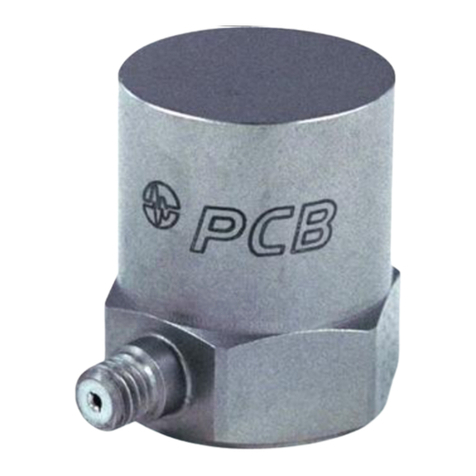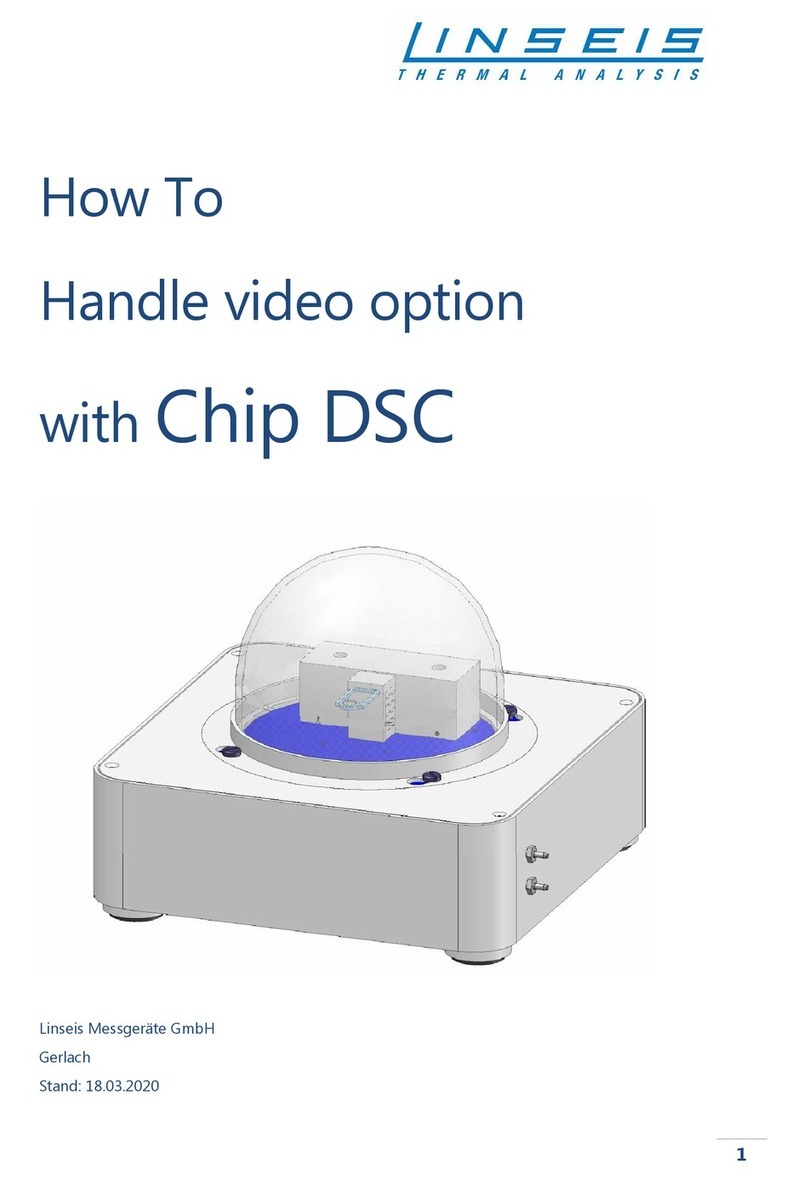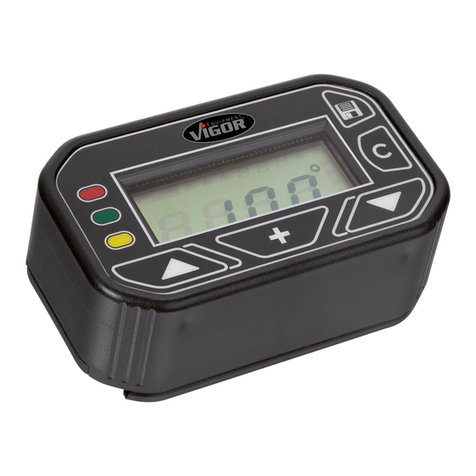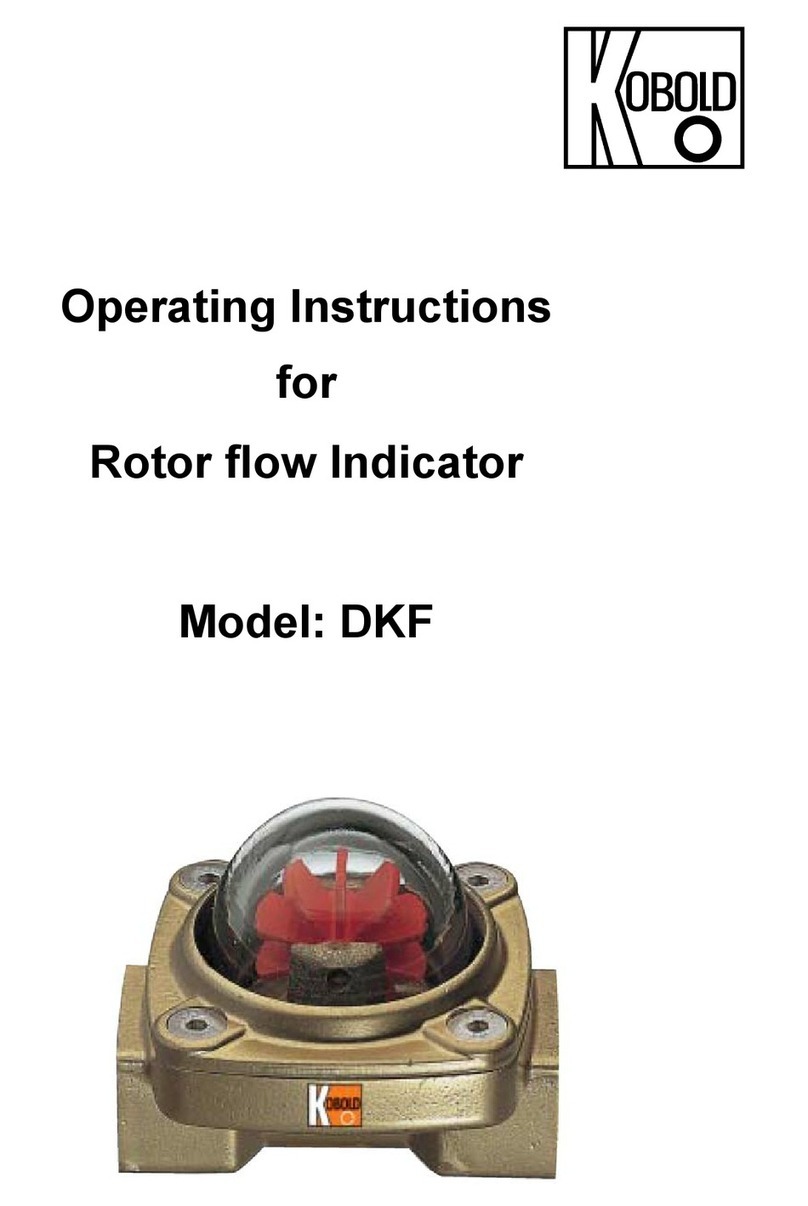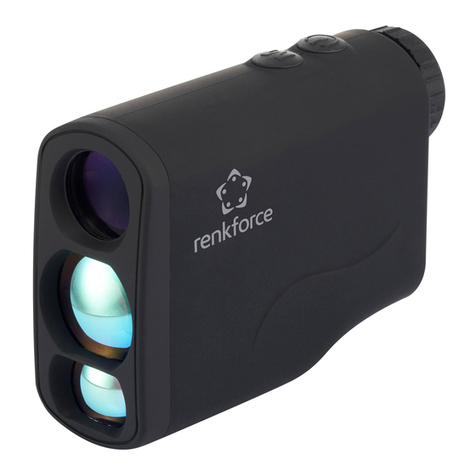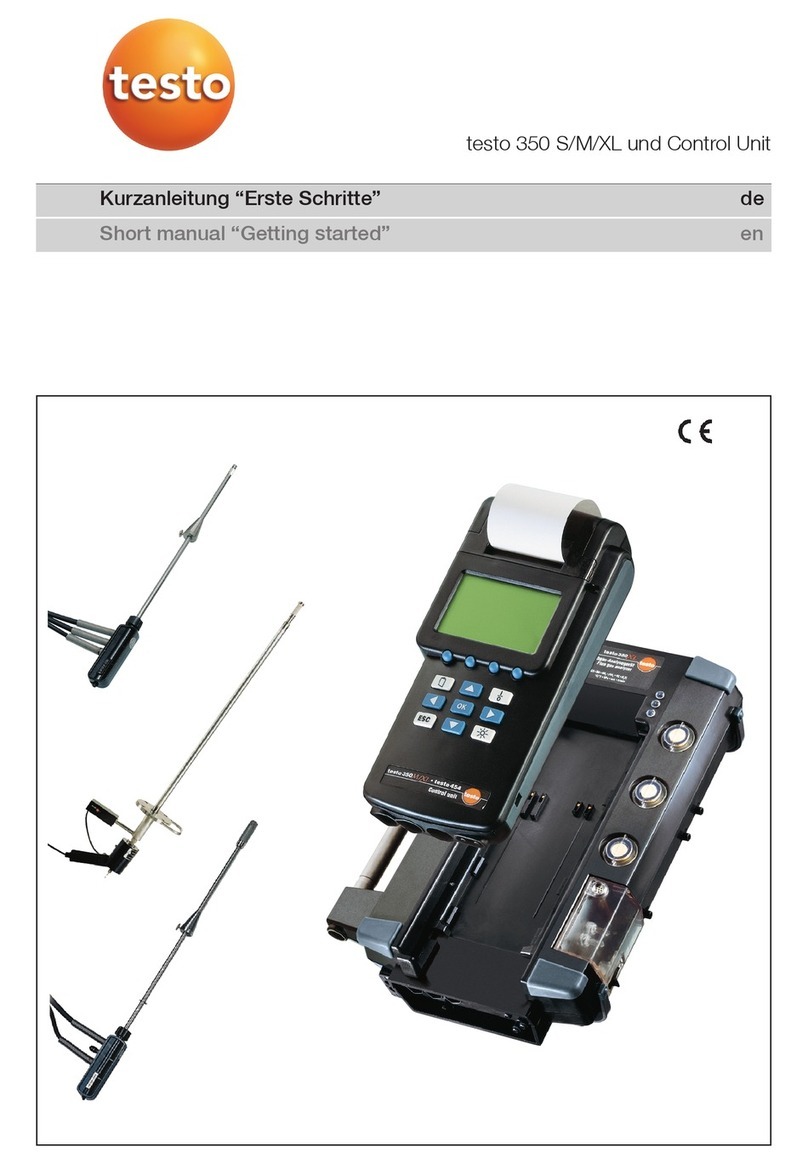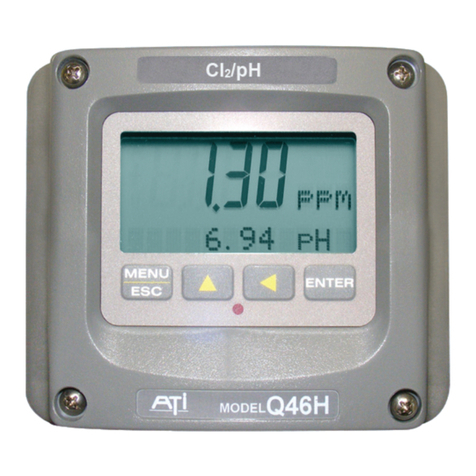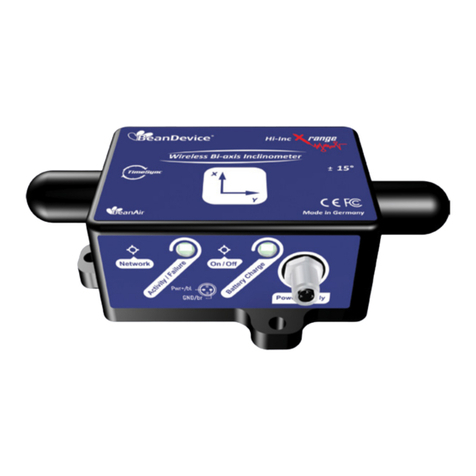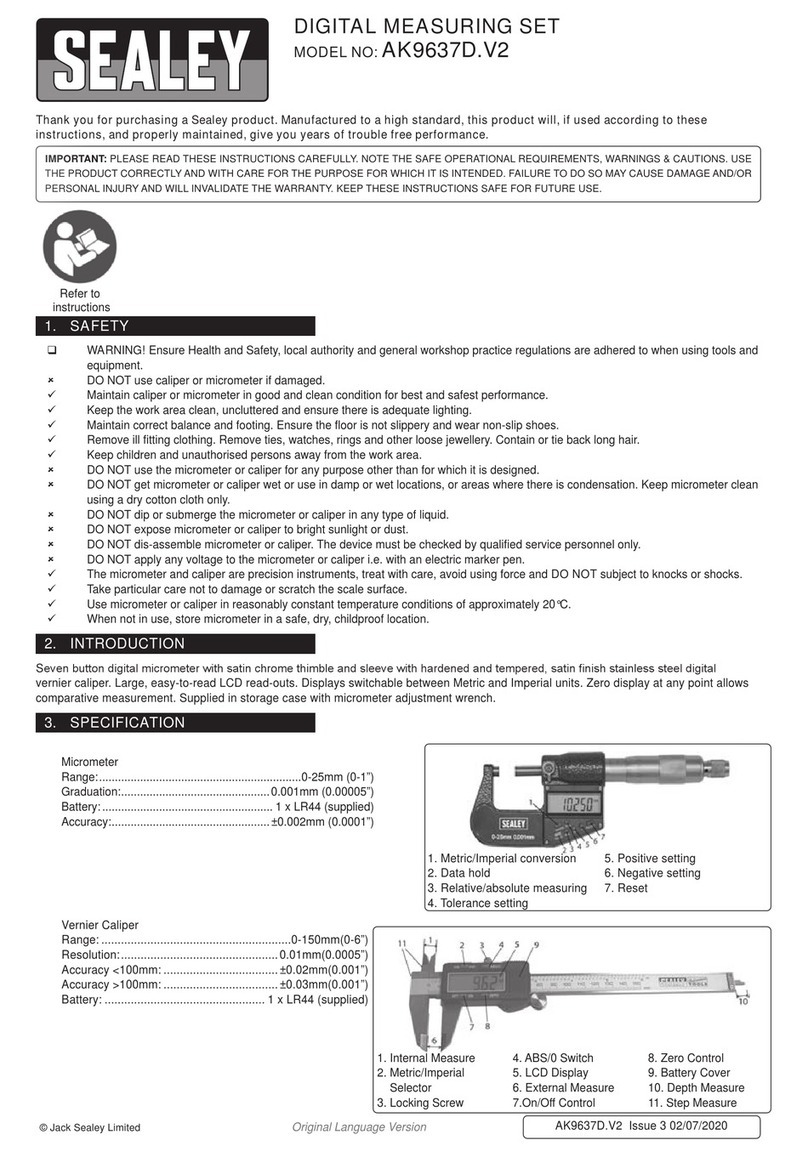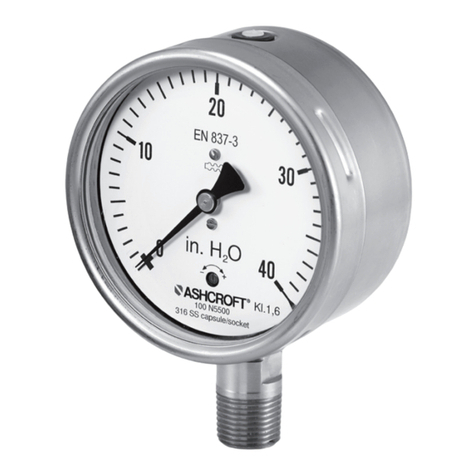Elementar Analysensysteme GmbH vario EL cube User manual

Variants Operating Instructions vario EL cube ©Elementar Analysensysteme GmbH
Variants Operating Instructions
vario EL cube
Analyzer
Version 17.02.2017
Elementar Analysensysteme GmbH

Variants Operating Instructions vario EL cube ©Elementar Analysensysteme GmbH
Copyright ©Elementar Analysensysteme GmbH
All rights reserved
This document contains proprietary information of Elementar Analysensysteme GmbH. Reprint is
prohibited.
Due to continued product development this information may change without notice. The information
and intellectual property contained herein is confidential between Elementar Analysensysteme GmbH
and the client and remains the exclusive property of Elementar Analysensysteme GmbH. If you find
any problems in the documentation, please report them to us. Elementar Analysensysteme GmbH
does not warrant that this document is error-free.
No part of this publication may be reproduced, stored in a data storage system, or transmitted in any
form or by any means, electronic, mechanical, photocopying, recording or otherwise without the prior
written permission of Elementar Analysensysteme GmbH.
Windows®, Windows XP®, Windows 7®and Windows 10®are trademarks of Microsoft Corporation.
MS-Excel®und MS-Access®are trademarks of Microsoft Corporation.
Elementar Analysensysteme GmbH
Elementar-Straße 1
63505 Langenselbold
Germany
+49 (0) 6184 9393 0
Internet: http://www.elementar.de

Variants Operating Instructions vario EL cube ©Elementar Analysensysteme GmbH
Contents 3
Contents
CHAPTER 1 General 7
Revision history.............................................................................................................................................8
About this document......................................................................................................................................9
Display conventions ....................................................................................................................................10
Working with the operating instructions.......................................................................................................10
General information on the operating instructions.......................................................................................10
Notes regarding modification.......................................................................................................................11
Warning notes during operation ..................................................................................................................11
CHAPTER 2 Oxygen determination with TCD 13
Analytical characteristics and technical specifications.................................................................................14
Substance digestion and functional diagram...............................................................................................14
Separation of the reaction gases.................................................................................................................17
Detection.....................................................................................................................................................17
Tube fillings.................................................................................................................................................18
Modification to O Mode ...............................................................................................................................19
Conditioning the pyrolysis tube ...................................................................................................................23
Changing of the pyrolysis crucible...............................................................................................................24
Establishing of the analysis readiness.........................................................................................................25
Notes on performing calibration ..................................................................................................................26
Oxygen analyses in routine operation.........................................................................................................27
Application notes for oxygen determination.................................................................................................29
Pyrolysis temperature ......................................................................................................................30
Difficult matrices...............................................................................................................................30
Lifetime of the pyrolysis tube............................................................................................................31
Additional error messages in O mode .........................................................................................................32
CHAPTER 3 Oxygen determination with NDIR 33
Analytical characteristics and technical specifications.................................................................................34
Substance digestion and functional diagram...............................................................................................34
Detection.....................................................................................................................................................38
Tube fillings.................................................................................................................................................38
Modification to O Mode ...............................................................................................................................40
Conditioning the pyrolysis tube ...................................................................................................................46
Changing of the pyrolysis crucible...............................................................................................................47
Establishing of the analysis readiness.........................................................................................................48
Notes on performing calibration ..................................................................................................................49
Oxygen analyses in routine operation.........................................................................................................50
Application notes for oxygen determination.................................................................................................52
Pyrolysis temperature ......................................................................................................................53
Difficult matrices...............................................................................................................................53
Lifetime of the pyrolysis tube............................................................................................................54

Variants Operating Instructions vario EL cube ©Elementar Analysensysteme GmbH
Contents 4
Additional error messages in O mode.........................................................................................................55
CHAPTER 4 Oxygen determination with combined NDIR for measuring CO and SO2 57
Analytical characteristics and technical specifications.................................................................................58
Substance digestion and functional diagram...............................................................................................58
Detection.....................................................................................................................................................62
Tube fillings.................................................................................................................................................62
Modification to O Mode ...............................................................................................................................64
Conditioning the pyrolysis tube ...................................................................................................................71
Changing of the pyrolysis crucible...............................................................................................................72
Establishing of the analysis readiness.........................................................................................................73
Notes on performing calibration ..................................................................................................................74
Oxygen analyses in routine operation.........................................................................................................74
Application notes for oxygen determination.................................................................................................76
Pyrolysis temperature ......................................................................................................................77
Difficult matrices...............................................................................................................................77
Lifetime of the pyrolysis tube............................................................................................................78

Variants Operating Instructions vario EL cube ©Elementar Analysensysteme GmbH
Contents 5
Additional error messages in O mode .........................................................................................................79
CHAPTER 5 Sulfur determination with NDIR 81
Special features...........................................................................................................................................82
Functional diagram......................................................................................................................................83
Modification to S operation..........................................................................................................................84
CHAPTER 6 Sulfur determination with combined NDIR for measuring CO and SO2 89
Special features...........................................................................................................................................90
Functional diagram......................................................................................................................................91
Modification to S operation..........................................................................................................................92
CHAPTER 7 Chlorine determination with EC cell 97
Analytical characteristics and technical specifications.................................................................................98
Substance digestion and functional diagram...............................................................................................98
Detection...................................................................................................................................................100
Tube fillings...............................................................................................................................................100
Notes on performing calibration ................................................................................................................102
Chlorine analyses in routine operation......................................................................................................103
Notes on sensitivity and measuring range.................................................................................................104
Cross-sensitivity of the EC cells................................................................................................................105
Quantitative conversion from Cl to HCl .....................................................................................................106
Maintenance of the HCl EC cells...............................................................................................................106
Leak test....................................................................................................................................................107
Modification to Cl operation.......................................................................................................................108
CHAPTER 8 TIC solids module 115
General information...................................................................................................................................116
Scope of delivery.......................................................................................................................................116
Safety instructions.....................................................................................................................................116
Technical specifications ............................................................................................................................117
Analytical characteristics...........................................................................................................................118
Functional diagram TIC module ................................................................................................................119
The components........................................................................................................................................121
Tube fillings...............................................................................................................................................121
Installation and initial start up of the TIC module.......................................................................................123
Selecting the operating mode....................................................................................................................126
General measuring principle TIC...............................................................................................................127
Analysis run...............................................................................................................................................128
Defining custom standard substances.......................................................................................................130
Maintenance work.....................................................................................................................................130
CHAPTER 9 CHNS determination with the liquid autosampler vario LS 133
CHNS determination with vario LS............................................................................................................134
Tube fillings...............................................................................................................................................137
Selecting the operating mode....................................................................................................................139
CHNS routine operation............................................................................................................................139
Setting device parameters.........................................................................................................................139
Defining custom standard substances.......................................................................................................142
Defining custom methods..........................................................................................................................142
Modification into CHNS liquid mode..........................................................................................................143
Calibration.................................................................................................................................................145
View of the analytical results.....................................................................................................................147
Check list, prior to the analysis run............................................................................................................147
Shut-down for measuring breaks...............................................................................................................148

Variants Operating Instructions vario EL cube ©Elementar Analysensysteme GmbH
Contents 6
CHAPTER 10 CHN determination with the liquid autosampler vario LS 149
CHN determination with vario LS ..............................................................................................................150
Tube fillings...............................................................................................................................................153
Selecting the operating mode....................................................................................................................155
CHN routine operation...............................................................................................................................155
Setting device parameters.........................................................................................................................156
Defining custom standard substances.......................................................................................................158
Defining custom methods..........................................................................................................................158
Modification into CHN liquid mode ............................................................................................................159
Calibration.................................................................................................................................................161
View of the analytical results.....................................................................................................................163
Check list, prior to the analysis run............................................................................................................163
Shut-down for measuring breaks...............................................................................................................164
CHAPTER 11 Upgrade kit for manual injection 165
Scope of the upgrade kit for manual injection ...........................................................................................166
Removal of components not needed.........................................................................................................167
Installation of the required parts................................................................................................................168
Functional diagram varioELcube CHNS....................................................................................................170
Functional diagram varioMACROcube CHN .............................................................................................172
Functional diagram varioMACROcube CHNS...........................................................................................174
Functional diagram varioMICROcube .......................................................................................................176
CHAPTER 12 Modification kit for special applications 179
Removing/installing and conditioning the special reaction tubes...............................................................180
Removing the special reaction tubes from the furnace ..................................................................181
Installing special reaction tubes in the furnace and conditioning....................................................183
Emptying and filling special reaction tubes................................................................................................188
Emptying special reaction tubes, CHNS / CNS / S mode...............................................................189
Filling the special reduction tube, CHNS / CNS / S mode..............................................................189
Filling the special combustion tube, CHNS / CNS / S mode ..........................................................191
Emptying special reaction tubes, CHN / CN / N mode...................................................................194
Filling the special reduction tube, CHN/ CN/ N mode.....................................................................194
Filling the special combustion tube, CHN/ CN/ N mode.................................................................196
Index 199

Variants Operating Instructions vario EL cube ©Elementar Analysensysteme GmbH
Purpose
This chapter contains general topics of the document.
In this chapter
Revision history.............................................................................................................................. 8
About this document....................................................................................................................... 9
Display conventions.......................................................................................................................10
Working with the operating instructions.........................................................................................10
General information on the operating instructions.........................................................................10
Notes regarding modification.........................................................................................................11
Warning notes during operation ....................................................................................................11
C H A P T E R 1
General

Variants Operating Instructions vario EL cube ©Elementar Analysensysteme GmbH
1 - General 8
Revision history
List of modifications in this document up to now
Date
Modification
20.10.2011
Creation.
03.04.2012
Tube 309 omitted.
29.05.2012
Length of empty ash finger in the Cl combustion tube modified.
02.01.2013
Replacing the tube no. 61 (omitted) to no. 108 (added)
14.05.2013
Picture with tube no. 108 removed
14.08.2013
Chapter "Manual injection" added
12.11.2013
Chapter "Modification kit for special applications" added.
18.06.2014
Desorption temperature CO from 260°C to 150°C changed.
19.11.2014
made different small text changes
09.06.2016
Reduction tube filling in CHNS mode with VLS changed
23.08.2016
Combustion tube and reduction tube filling in the CHNS mode with VLS
changed and made further small edits.
15.09.2016
Change of address Langenselbold
17.02.2017
Contents checked

Variants Operating Instructions vario EL cube ©Elementar Analysensysteme GmbH
1 - General 9
About this document
Status of the operating instructions
The status of the operating instructions is: 17.02.2017.
Identification number
The operating instructions identification number is: 19.00-5006.
Validity
The operating instructions are valid for all instruments as from serial number: 19105046.

Variants Operating Instructions vario EL cube ©Elementar Analysensysteme GmbH
1 - General 10
Display conventions
Before you start using this guide, it is important to understand the terms and typographical
conventions used in the documentation. The following kinds of formatting in the text identify special
information.
Formatting convention
Type of information
Triangular bullet ()
Step by step procedure. You can follow these instructions to
complete a specific task.
Special bold
Items you must select, such as menu options (e. g. File > New),
command buttons (e. g. Cancel), or common accentuation.
Italics
Used to emphasize the importance of an item or for variable
expressions such as parameters.
CAPITALS
Names of keys on the keyboard, for example, SHIFT, CTRL, or
ALT.
KEY+KEY
Key combinations for which the user must press and hold down
one key and then press another, for example, CTRL+P, or
ALT+F4.
"Quotation marks"
Denote amongst others the names of dialogs in the software, e. g.
the "Replace part" dialog.
{Symbolic name}
Denotes a symbolic name, e. g. {Element} stands for the
corresponding name of an element.
Working with the operating instructions
Operating the analyzer
Read the operating instructions thoroughly before performing work with the analyzer.
Storing the operating instructions
Store the operating instructions carefully and make sure the instructions are accessible for all relevant
personnel.
Passing on the operating instructions
If you pass on the analyzer, always pass on the operating instructions, too.
General information on the operating instructions
Pictures
The instruments of Elementar underlie a permanent development and adjustment regarding the
optimum parameter settings. This may lead to deviations in terms of picture display of the manual and
the current instrument status which are not relevant for the understanding of the instrument operation.
The valid numbers of the parameter settings and/or variables can be found in the current text part.
Therefore, numbers in the pictures of software dialogs are mainly replaced by spaces or only reflect
examples. They do not reflect the proper, recommended set values.
Reading aids
Subheadings are displayed in the left margin as reading aids. They sum up the content of the
particular section and are useful for quick navigation.

Variants Operating Instructions vario EL cube ©Elementar Analysensysteme GmbH
1 - General 11
Index
An index is given at the end of the operating instructions that helps you locate certain topics more
easily. Index entries always refer to the first page of the section in which the index term is found.
Therefore, don't be confused if the index term does not appear on the first page but rather on one of
the following pages.
Notes regarding modification
Note
Due to the modular design of the analyzer, a large variety of modifications are possible. The individual
modifications described in these instructions are limited to established scenerios in order to keep the
comprehensiveness of the instructions within certain limits.
Warning notes during operation
Note
Always pay attention to careful handling when working with the instrument, especially for
modifications, maintenance and repairing works. The following notes have to be strictly observed
when performing the corresponding works.
Also observe the safety and warning notes in the operating instructions of the basic instrument.
Gas pressure
Please observe the following instruction:
Warning
Gas pressure and caustic substances in the instrument
Consumables may escape under pressure and cause chemical burns. Before
performing the work:
Shut off the gas supply. To do so, execute the Options > Maintenance >
Replace parts command.
Switching off the instrument
Please observe the following instruction:
Caution
Lack of ventilation of the analyzer!
A lack of ventilation leads to overheating of the analyzer. Before you switch off the
instrument:
Ste the setpoint temperatures of the furnaces to 0 °C. To do so execute the
command Options > Settings > Parameter > Temperatures
Allow the furnaces to cool down until the temperature displayed is less than
55 °C
Hot instrument parts
Please observe the following instruction:
Warning
Hot components in the instrument
When working inside the instrument there is a risk of burning as many parts of the
instrument are hot.
When working inside the instrument always wear protective glasses and the
enclosed heat protection gloves.

Variants Operating Instructions vario EL cube ©Elementar Analysensysteme GmbH
1 - General 12
Changing mode
Please observe the following instruction:
Caution
Overheating if tube fillings are not appropriate for the operating mode!
Overheated tube fillings melt, run into the furnace area and destroy the furnace.
Make sure that the tube fillings correspond to the selected operating mode.
Filling reaction tubes
Please observe the following instructions:
Warning
Sharp pieces of broken glass!
When cold quartz or glass components break there is a risk of cut injuries.
Wear the enclosed protective leather gloves and protective glasses when
handling cold quartz and glass parts.
Caution
Cutting sealing elements apart/out (o-rings, quad rings, half shells, ferrules).
When cutting sealing elements apart/out with a knife you may damage sealing
surfaces.
Never remove sealing elements with a knife but rather with tweezers.
Installing and conditioning the reaction tubes
Please observe the following instructions:
Warning
Hot components in the instrument
When working inside the instrument there is a risk of burning as many parts of the
instrument are hot.
When working inside the instrument always wear protective glasses and the
enclosed heat protection gloves.
Caution
Overheating if tube fillings are not appropriate for the operating mode!
Overheated tube fillings melt, run into the furnace area and destroy the furnace.
Make sure that the tube fillings correspond to the selected operating mode.

Variants Operating Instructions vario EL cube ©Elementar Analysensysteme GmbH
Target group
Personnel involved with the instrument.
Purpose
This section describes the special features of the oxygen determination with TCD.
In this chapter
Analytical characteristics and technical specifications...................................................................14
Substance digestion and functional diagram.................................................................................14
Separation of the reaction gases...................................................................................................17
Detection.......................................................................................................................................17
Tube fillings ...................................................................................................................................18
Modification to O Mode..................................................................................................................19
Conditioning the pyrolysis tube......................................................................................................23
Changing of the pyrolysis crucible.................................................................................................24
Establishing of the analysis readiness...........................................................................................25
Notes on performing calibration.....................................................................................................26
Oxygen analyses in routine operation ...........................................................................................27
Application notes for oxygen determination...................................................................................29
Additional error messages in O mode ...........................................................................................32
C H A P T E R 2
Oxygen determination with TCD

Variants Operating Instructions vario EL cube ©Elementar Analysensysteme GmbH
2 - Oxygen determination with TCD 14
Analytical characteristics and technical specifications
Analytical characteristics
The following table explains the analytical characteristics:
Analytical characteristic
Comments
Analysis method
Oxygen determination by pyrolysis of samples, separation of
foreign gases, separation of the desired measuring components,
thermal conductivity detection.
Detector
Thermal conductivity detector (TCD)
Sample weight/sample volume
Approx. < 1 to 10 mg depending on the substance.
Working range
(depending on kit and measuring
mode)
O: 0.03 - 5 mg
Precision / standard deviation
<0,2 % with benzoic acid (approx. 2 mg)
Duration of analysis
(depending on element content
and sample weight)
O: 8 - 15 min
Calibration
Linear and non-linear curve adjustment; total work range.
Data storage and data output
Storage on hard disk or external storage media.
LIMS transfer possible.
Data output to screen and printer.
Technical specifications
The following table contains the technical specifications of the gas supply:
Reference value
Technical specifications
Supply gases
Helium, purity 99.995%
Consumption of supply gases
Per analysis approx. 1.4 to 2.6 liters helium
Substance digestion and functional diagram
Introduction
The following section explains:
Which procedures in the pyrolysis tube of the furnace are processed.
How the reaction gas mixture is prepared for adsorption and separation into its constituents.
Processes during substance digestion and preparation of the reaction gas mixture
The substance digestion will be improved with and additive of approx. 8 mg polyethylene (PE)
(temporarily there is a H2concentration of > 10% in ambiance of the sample).
The O recovery becomes more matrix independent. The PE can be inserted in the carousel in a
second boat.
Substance digestion and preparation of the reaction gas mixture is divided into the following phases:
Phase
Process
1
The substance to be analyzed is digested in reductive atmosphere at a temperature of
approx. 1,170 °C by means of pyrolysis (cracking).

Variants Operating Instructions vario EL cube ©Elementar Analysensysteme GmbH
2 - Oxygen determination with TCD 15
2
For the digestion weigh in the sample into silver boats (for liquid samples silver capsules are
available). The folded boat is thrown into the quartz glass pyrolysis tube by means of an
autosampler.
3
The oxygen containing radicals formed in the pyrolysis tube are converted quantitatively at a
carbon contact (special carbon black) into carbon monoxide (Boudouard equilibrium).
4
Acidic pyrolysis products like e.g. H2S, HCN, HCl etc. are absorbed at NaOH by means of
an absorption tube which is downstream of the pyrolysis tube.
5
Usually, water is set free during the reaction of NaOH with an acidic medium. Therefore, the
gas mixture is dried once again after the NaOH layer.
6
Other pyrolysis products like e.g. N2and CH4are led to a separation and measuring system
together with the carbon monoxide to be detected.

Variants Operating Instructions vario EL cube ©Elementar Analysensysteme GmbH
2 - Oxygen determination with TCD 16
Notes
For a better understanding see also the following illustration (tubing diagram, oxygen determination).
Symbols
The following list names the functional and basic symbols:
Two-way valve
Pressure sensor
Gas separation

Variants Operating Instructions vario EL cube ©Elementar Analysensysteme GmbH
2 - Oxygen determination with TCD 17
Three-way valve
Loop
Measuring cell
Check valve
Heated tube
Sensor
Throttle
Drying
Hose line
Flow controller
Combustion
Copper tube
Flow sensor
Post combustion
Reduction
Pressure contoller
Actuator
Separation of the reaction gases
Introduction
The following section explains how the individual measuring components in the reaction gas mixture
are separated from each other.
Procedures during separation
The separation of the measuring components is divided into the following phases:
Phase
Process
1
The gas mixture of CO and the by-products N2, H2and CH4flow through the adsorption
column at a temperature of 40 °C.
Thus, the CO is removed quantitatively from the gas stream.
2
As the first component, the by-products unaffected by the adsorption column enter into the
TCD together with the carrier gas helium.
3
The measurement of the N2, H2and CH4fractions takes place. The result is ignored
(dummy peak).
4
The adsorption column loaded with CO is heated up to 150°C whereby the CO is desorbed
quickly and flushed by helium into the TCD.
5
A fan cools the adsorption column to cooling temperature of 40 °C and, thus making it ready
for the next analysis sample.
Note
Samples containing fluorine and phosphorus may cause false O results. Fluorine my cause damages
in the instrument, particulary at the quartz parts. Alkaline, earth alkaline and sulfurous samples have
to be loaded with a 1:1 mixture of hexamethylentetramine and ammonia chloride. When measuring
heavy alkaline/earth alkaline samples the pyrolysis tube will corrode.
Detection
Introduction
The method of detection is described under Detection of measuring components and evaluation of
the measuring signal in the vario EL cube operating instructions.

Variants Operating Instructions vario EL cube ©Elementar Analysensysteme GmbH
2 - Oxygen determination with TCD 18
Variations relevant for the oxygen determination
O integration
After the dummy peak integration has been finished, the following is possible:
Directly heat-out the CO collected on the adsorption column (approx. 260°C).
Heat-up the adsorption column to an "interim temperature" (approx. 60°C) in order to
separate hydrocarbons from the CO if necessary.
Prior to the start of the CO integration, another autozero alignment is carried out.
The O integration has been finished if the process time "peak anticipation time for O" (factory set
to 150 sec) has expired, and the dector signal is smaller than the cut-off threshold "O peak"
(defined internally).
Tube fillings
Requirements:
Before starting work, the following requirements must be met:
All quartz and glass components must be cleaned before their usage. Clean the tubes from
fingerprints by means of a suitable solvent (e.g. acetone) before installing. Otherwise there is a
risk of crystallization which will lead to premature ageing of the quartz.
Use chemicals necessary for the tube fillings only in the appropriate quality. Delivery directly from
the instrument manufacturer.
Safety instruction
Strictly observe the safety instruction "Filling reaction tubes" under Warning notes during operation
(on page 11).
Filling of the quartz pyrolysis tube (crack tube) for O determination
The arrangement of the filling must be carried out as shown in the following illustration.
The insert in the core of the tube contains the solid pyrolysis residue as well as the melted silver from
the silver boats.
Legend:
1 Ash finger (used as protection tube)
2 Ash crucible
3 Graphite felt (10 mm)
4 Carbon black (55 mm)
5 Support rod (110 mm)
6 Quartz chips, coarse (2-4 mm)
7 Quartz wool (2 mm)

Variants Operating Instructions vario EL cube ©Elementar Analysensysteme GmbH
2 - Oxygen determination with TCD 19
Removal of traces of moisture and other contaminations from the carrier gas
For gas drying insert commercial cleaning cartridges between gas delivery point and instrument, if
necessary.
Humid carrier gas causes a CO base which will be collected as a blank on the adsorption column.
Filling the NaOH absorption tube
The following picture shows the filling of the absorbtion tube:
Legend:
1 Cotton
2 NaOH
3 Quartz wool (10 mm)
4 Sicapent®
5 Gas inlet
Proceed as follows:
Fill the tube with NaOH (on carrier) and with Sicapent® (identical fill heights).
Close the tube ends with cotton.
Insert the NaOH tube into the already mounted clamps at the left side of the combustion furnace.
Modification to O Mode
Scope of the modification kit for oxygen determination
All parts necessary for the tube modification are included in the O upgrade kit for detecting oxygen
with TCD and are labeled with numbers.

Variants Operating Instructions vario EL cube ©Elementar Analysensysteme GmbH
2 - Oxygen determination with TCD 20
Legend:
4 Pyrolysis tube
5 Glass tube
9 Insulation plug
10 Adsorption column
14 Quad ring, black
15 Ball
16 Ground-in clamp
35 Pan, closed
37 Tube no. 46
38 Hose line no. 47
39 Hose line no. 48
40 Combustion tube flange
42 Hose line no. 10
The following parts are also part of the kit but are not pictured.
Sheath tube
Ash crucible
D-sub-adapter
Software update CD.
Safety instruction
Strictly observe the safety instruction "Gas pressure" under Warning notes during operation (on
page 11).
Note
To remove/install the tubes proceed as described in chapter Removing standard reaction tubes of the
vario EL cube main operating instructions.
Process
The modification is divided into the following phases:
Removal of components not needed
Modification
Installation of components necessary for the O operation
Phase 1: Removal of components not needed
Proceed as follows:
Before starting the installation of the pyrolysis tube, remove the components as following listed:
O2supply line
Table of contents
